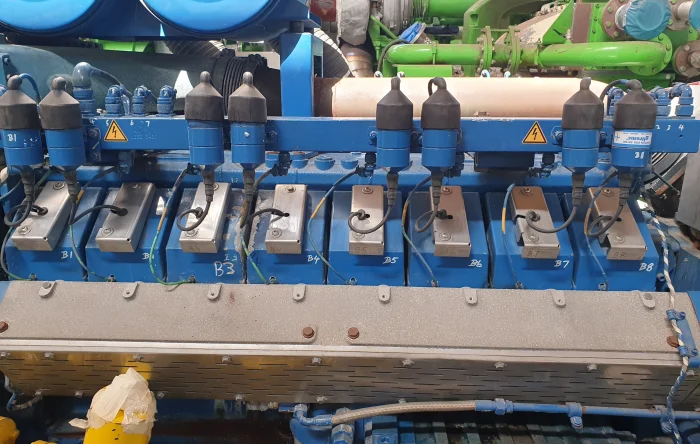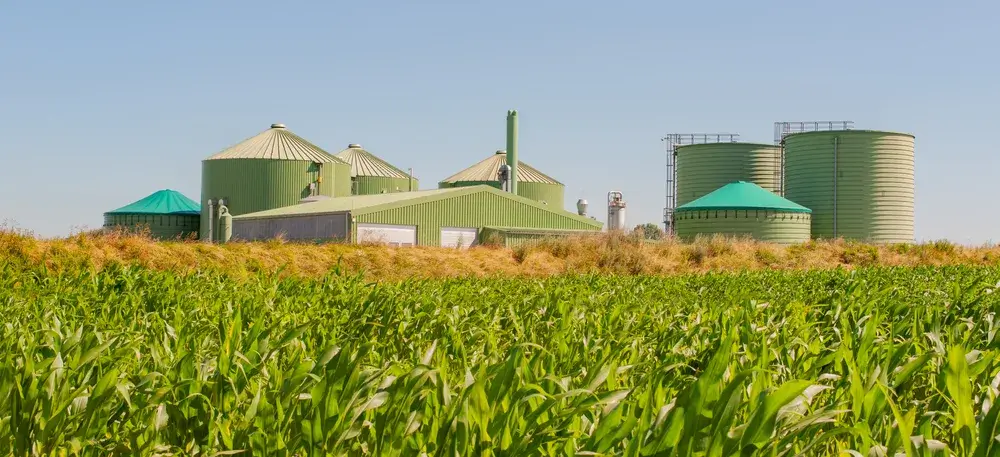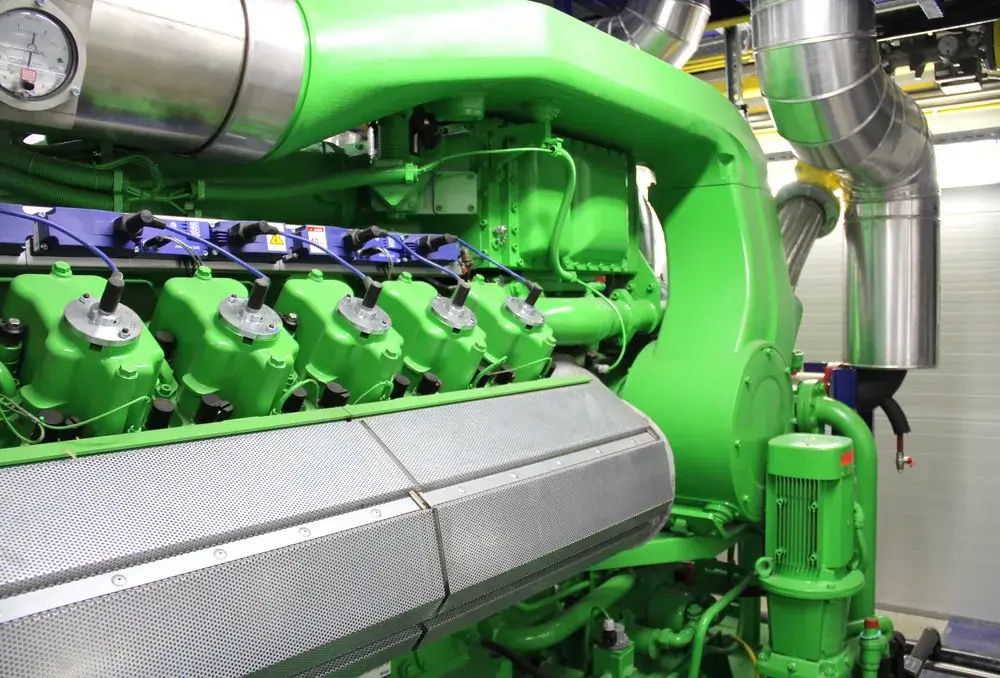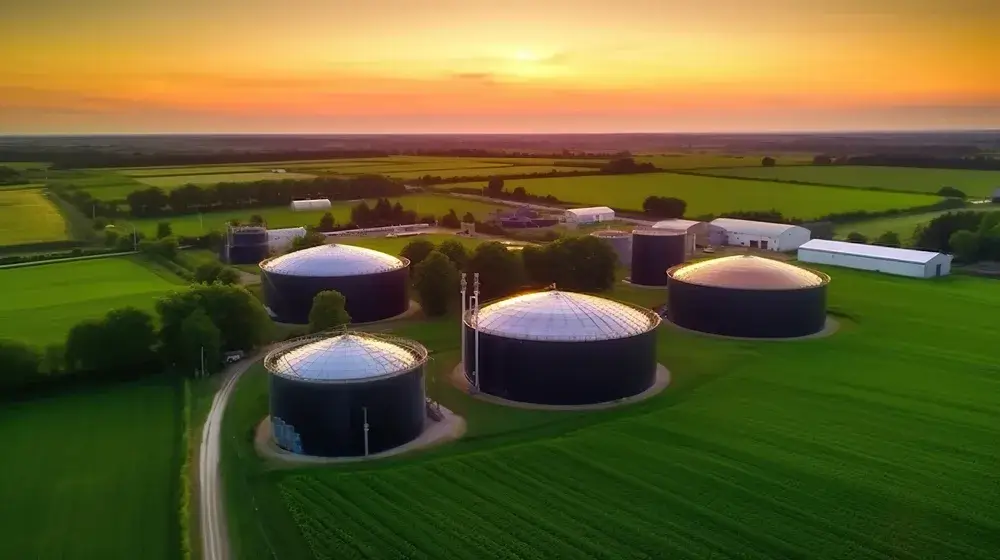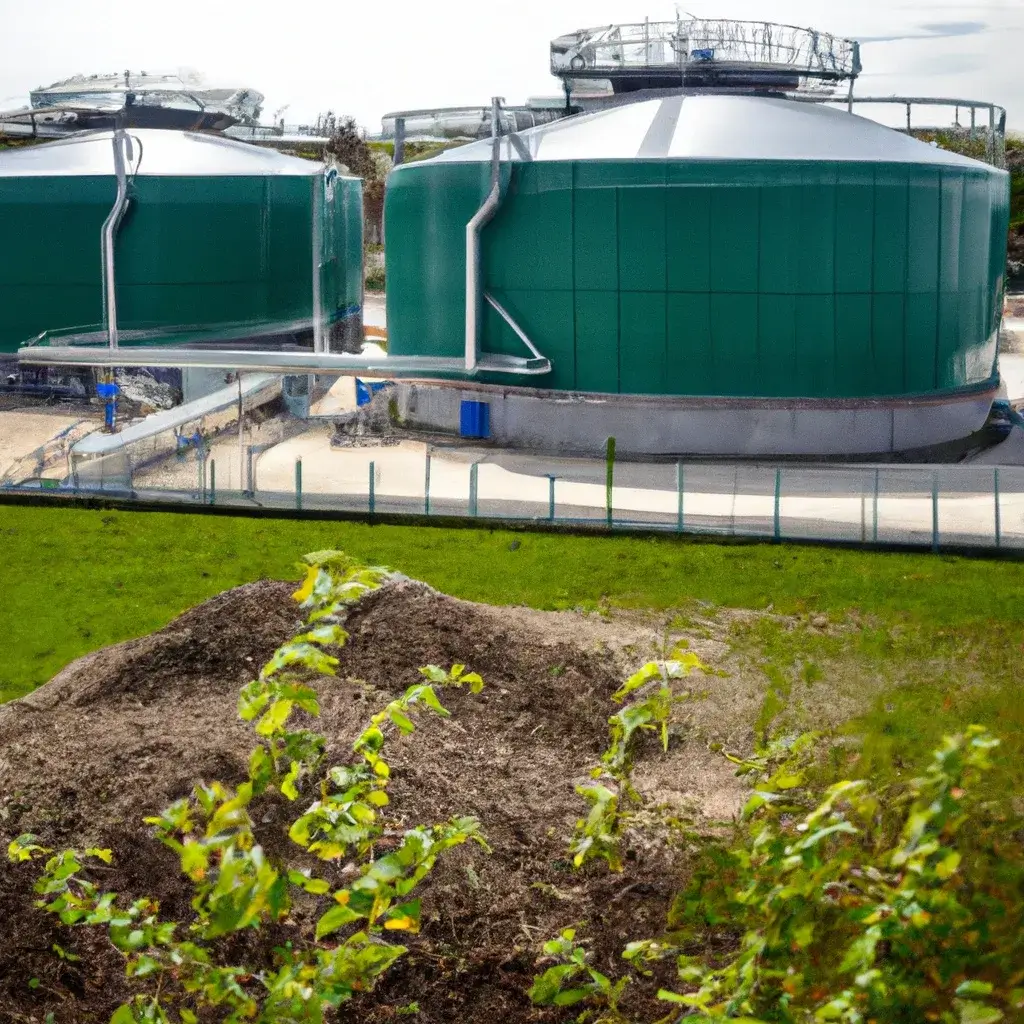Cogeneration – everything you need to know
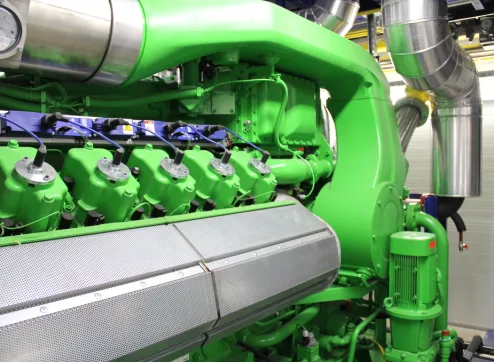
Cogeneration, often abbreviated as CHP (Combined Heat and Power), represents a highly efficient approach to energy production. By generating both electricity and usable heat from a single fuel source, cogeneration plants stand out as a more sustainable alternative to traditional power generation methods. But what exactly does CHP entail, and how does it fit into the broader energy landscape?
In this article, we will define CHP, explore its structure, highlight its key benefits and drawbacks, and examine its role in renewable energy production. Additionally, we’ll discover the types of fuels that power these systems and discuss how advancements like biogas are shaping the future of cogeneration.

Definition: What is cogeneration, and what does CHP mean?
Cogeneration – also referred to as CHP, meaning combined heat and power – is an energy production method that produces electric power and thermal energy simultaneously from a single fuel source. Unlike conventional power generation methods, where heat is often wasted, CHP captures and reuses this waste heat for additional purposes, such as heating water or providing steam for industrial processes. This process maximizes energy efficiency and minimizes energy loss.
In a cogeneration system, the fuel used for the production of electricity—whether natural gas, biogas, or other energy sources – also serves to generate useful heat. This dual-purpose approach allows CHP systems to achieve high-efficiency levels, often surpassing 80%, compared to traditional power plants where nearly two-thirds of energy can be wasted.¹
By recovering and reusing heat, CHP systems significantly reduce overall energy consumption and environmental impact, making them a preferred choice for industries focused on both electric power and thermal energy needs.
¹United States Environmental Protection Agency: What is CHP? 2024/02. https://www.epa.gov/chp/what-chp. Accessed: 2024/09.
Structure and types of CHP plants
A CHP plant (Combined Heat and Power plant) typically operates by capturing the waste heat that would otherwise be lost during the power generation process and converting it into useful heat for applications like water heating or space heating.
There are two primary types of CHP plants:
- Combustion turbine / Reciprocating engine + heat recovery unit: In this configuration, a gas turbine or reciprocating engine generates electricity, and the turbine exhaust or engine heat is captured by a heat recovery unit. The recovered heat is then used to generate steam or hot water for additional uses, significantly improving overall energy efficiency.
- Steam boiler + steam turbine: This system uses a boiler to generate steam, which powers a steam turbine to produce electricity. The heat recovery steam generator (HRSG) recycles the heat, making this setup ideal for large-scale industrial processes.
Source: United States Environmental Protection Agency: What is CHP?
Advantages and disadvantages of cogeneration systems
Cogeneration systems offer a highly effective solution to energy production by providing both electricity and heat in one process. But, like all technologies, they come with their own set of strengths and challenges. Let’s take a closer look at the advantages and disadvantages that come with the integration of these high-efficiency systems.
Advantages
- High-efficiency: Cogeneration systems can achieve efficiency levels exceeding 80%, compared to conventional power plants, which may waste up to nearly two-thirds of the energy. This allows for significant energy savings, as both electricity and heat are generated from a single fuel source.
- Reduction in carbon emissions: By utilizing the waste heat, cogeneration systems contribute to a reduction in carbon emissions and other pollutants compared to traditional power generation methods. This leads to a lower environmental impact and aligns with global efforts to reduce greenhouse gases.
- Cost-effective: The dual production of electricity and heat makes cogeneration more cost-effective, especially in large industrial settings. This system minimizes fuel consumption and operating costs, improving overall efficiency.
- Energy security: Cogeneration systems can operate independently from the electrical grid, offering enhanced reliability for industries and businesses that require uninterrupted energy supplies.
Disadvantages
- Widespread use of fossil fuels: Although cogeneration can utilize renewable fuels, many systems still rely on fossil fuels, limiting the overall environmental benefits and contributing to resource depletion.
- High upfront costs: Setting up a cogeneration system requires substantial initial investment in power systems and infrastructure, making it a long-term commitment.
- Limited scalability: While effective for large-scale industrial applications, cogeneration may not always be suitable for small-scale energy needs due to its size and complexity
Where to encounter combined heat and power plants
CHP plants (Combined Heat and Power) can be found in various industries and environments where both electric power and heat are required. These systems are particularly common in industrial facilities like manufacturing plants, refineries, and chemical production sites, where energy demands are high and consistent heat is essential for operational processes.
In urban areas, district heating systems often rely on cogeneration plants to provide both heat and electricity to large communities, ensuring more efficient power production for residential and commercial buildings. Hospitals, universities, and data centers also frequently use CHP plants to secure a reliable energy supply, allowing them to reduce energy costs while maintaining continuous operations.
With the growing demand for sustainable and efficient energy solutions, cogeneration is becoming an increasingly popular option across sectors that require uninterrupted heat and power.
Is cogeneration a renewable energy production method?
Whether one can say that cogeneration is a renewable energy production method depends primarily on the type of fuel being used. Cogeneration itself is a highly efficient process that captures and utilizes waste heat from electricity production.
However, the renewable or non-renewable nature of this energy depends on whether the fuel driving the system is derived from renewable sources. Thus, the types of fuels that can power CHP plants will be explored further in the next section.
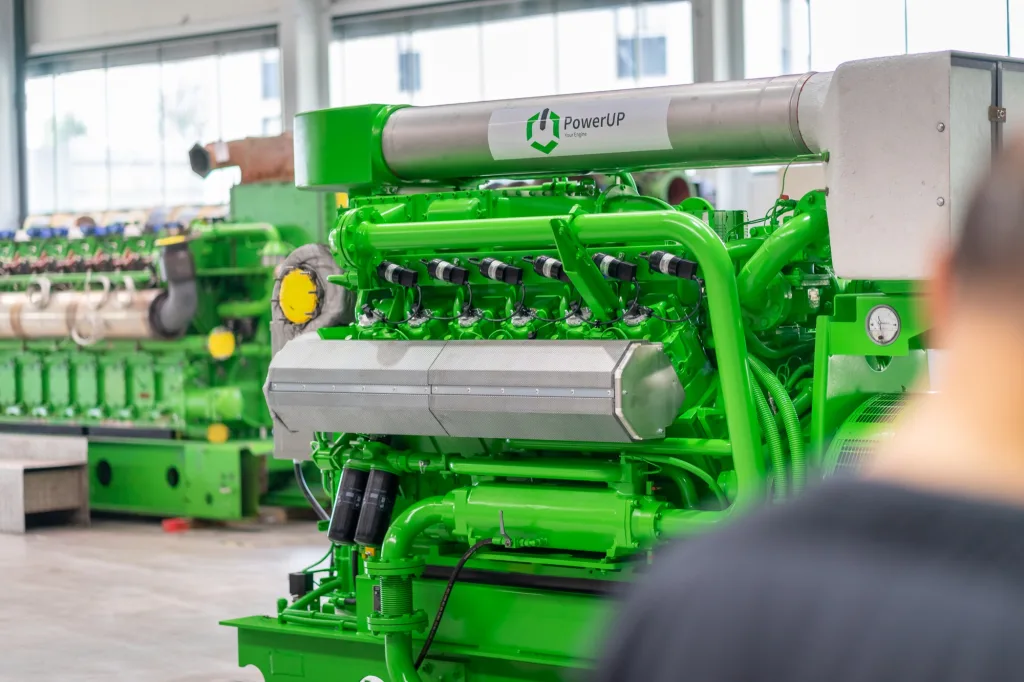
What fuels can be used in CHP plants?
CHP plants are highly versatile in terms of fuel sources, allowing for flexibility in energy production. Natural gas is a very commonly used fuel due to its efficiency and widespread availability. However, other fuels such as biogas and biomass are also frequently employed, especially when aiming for renewable energy solutions. These renewable fuels help reduce the reliance on fossil fuels and lower greenhouse gas emissions.
Additionally, hydrogen is gaining attention as a clean cogeneration fuel option, as it produces no direct carbon emissions. CHP plants can also run on traditional fossil fuels such as coal or oil, though these options are less environmentally friendly.
The adaptability of CHP plants to various fuels allows them to maximize primary energy use in power generation, which makes them an essential part of the global shift towards more flexible and efficient energy systems.
Biogas in cogeneration: Towards a greener energy future
As already anticipated, biogas is emerging as a key player in the journey toward a greener and more sustainable energy future, particularly in cogeneration systems. As a renewable energy source, biogas is produced from organic waste, such as agricultural residues, food waste, and wastewater. This makes it a sustainable and eco-friendly fuel option for CHP systems. When used in cogeneration, biogas enables the simultaneous production of electricity and heat, improving energy efficiency and reducing overall carbon emissions.
The use of biogas in CHP systems also supports the transition to low-carbon energy, contributing to greater sustainability in industrial and commercial applications. This means that, by incorporating biogas into power plant operations, businesses and municipalities can lower their reliance on fossil fuels while enhancing energy security.
Which types of fuel can be used with a CHP plant?
CHP are not only extremely efficient, but also flexible when it comes to possible fuel types. Learn more on what can power a CHP plant in this article.
Efficiency in cogeneration – an inherent characteristic with room for improvement
Cogeneration is known for its energy efficiency, as it captures waste heat produced during power production and repurposes it for heating or other processes. This dual use of energy results in efficiencies of over 80%, making them a cost-effective and sustainable choice.
However, despite the inherent efficiency, there is still room for improvement. Modern advancements in CHP systems are focusing on optimizing the recovery of waste heat, refining engine designs, and incorporating more sophisticated control systems to ensure even higher efficiency levels. Innovations like better heat recovery units and enhanced engine controls can push the boundaries of efficiency, further minimizing energy losses and reducing overall environmental impact.
This is what drives us at PowerUP, as we dedicate ourselves to improving the efficiency of gas engines as well as biogas engines by renowned manufacturers.
Maximizing CHP efficiency with PowerUP
To achieve maximum efficiency in CHP systems, PowerUP provides specialized solutions that optimize the performance of gas engines used in cogeneration. Through targeted upgrades and maintenance services, we can increase overall energy efficiency, reducing fuel consumption and operational costs.
We also offer customized engine maintenance plans and dedicated gas engine spare parts designed by PowerUP to extend the lifespan and reliability of gas engines in CHP systems. With our proprietary solutions and services, such as engine overhauls, upgraded components, and advanced diagnostics, PowerUP ensures peak performance of gas engines by MWM®, Caterpillar® and Jenbacher®.
These improvements not only boost the efficiency of CHP plants, but also contribute to lowering carbon emissions and reducing the environmental footprint of energy production. This way, businesses can unlock the full potential of their cogeneration units by partnering with PowerUP.





